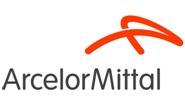Steel Mills

ArcelorMittal Results Affected by Declining Iron Ore Price and Imports
Written by Sandy Williams
May 7, 2015
ArcelorMittal reported a net loss of $728 million in first quarter 2015 compared to a loss of $955 million in fourth quarter 2014. EBITDA was $1.4 billion. Steel shipments were up 3 percent year over year to 21.6 million tonnes. Iron ore shipments rose 5 percent to 9.4 million tonnes. Total sales for the company were $17.1 billion.
“We faced a number of headwinds in the first quarter, including a declining iron-ore price, a stronger dollar and surge of imports in the United States,” commented Chairman and CEO Lakshmi Mittal in the earnings report. “As a result of which EBITDA declined to US$1.4 billion, although the underlying performance of our steel business remained similar to the first quarter of 2014. The performance in Europe was of particular note, with EBITDA improving 15% year-on-year. Offsetting the impact of these headwinds is a priority and we are focused on achieving a 15% reduction in mining costs and improving the competitive position of our US operations. Importantly, we still expect to remain free cash flow positive and further reduce net debt over the course of the year.”
The NAFTA region, which includes the U.S. and Mexico, posted underlying EBITDA of $259 million that included a negative $76 million provision related to an onerous annual tin plate contract at Weirton.
NAFTA steel shipment volumes declined by 5.9 percent q/q to 5.5 million tonnes, driven by a 7.9 percent decline in flat product shipments. The decline was due to weaker demand and strong de-stocking. The average steel selling price for Q1 was $840/tonne. Average selling price for flat products fell 3.1 percent and long products dropped 8 .0 percent.
Crude steel production for the region fell 3.8 percent q/q to 5.9 million tonnes as production was adjusted to align with weaker demand.
In the guidance for FY 2015 ArcelorMittal said it expects company steel shipments to increase by 3-5 percent compared to 2014. Low iron ore prices and a weaker US market are expected to cause headwinds for FY 2015 results.
ArcelorMittal forecasts a 0.5 percent to 1.5 percent increase in global apparent steel consumption for 2015. The regional breakdown is:
• +0.5% to +1.5% in China
• -2.0% to -3.0% in US
• +1.5% to +2.5% in EU28
• -5.0% to -7.0% in Brazil, and
• -5.0% to -7.0% in CIS
AM/NS Calvert has been approved on 157 of 1823 identified automotive qualification packages and is targeting 20 more approvals during 2015. ArcelorMittal Mexico,Tubarao and ArcelorMittal USA are continuing to provide slab for AM/NS Calvert. Qualifications are continuing in the structural, OCTG and line pipe segment with significant progress. The continuous coating line upgrade to aluminize line #4 was completed during first quarter. The slab yard expansion is scheduled to be completed by the second half of 2016.
ArcelorMittal Dofasco produced its first commercial coil on the new #6 heavy gauge galvanizing line in April.

Sandy Williams
Read more from Sandy WilliamsLatest in Steel Mills

Nucor names Batterbee, Bledsoe to HR roles
Nucor Corp. has promoted Thomas J. Batterbee to the position EVP of human resources and talent and appointed Elizabeth Bledsoe to the newly created position of president of human resources and talent.

Millett sees tariffs, CORE case benefiting SDI
Steel Dynamics' top exec thinks Trump’s tariff policies, as well as the results from the recent CORE case, will prove advantageous to the Fort Wayne, Ind.-based steelmaker and aluminum company.

USW digs in on opposition to USS-Nippon deal
“We remain deeply concerned about the national and economic security implications of the subject transaction,” the union stated in the letter dated April 21.

SDI’s Q1 earnings slump on-year, but up sequentially
SDI earnings slip in first quarter year over year, but are up sequentially.

POSCO inks MoU with Hyundai on Louisiana EAF mill
POSCO has signed a Memorandum of Understanding (MoU) with Hyundai Motor Group that includes an equity investment in Hyundai’s previously announced EAF mill set to be built in Louisiana.
